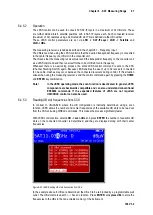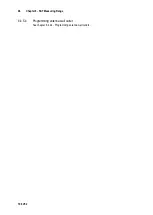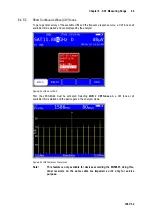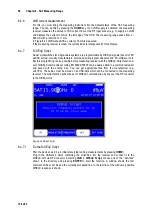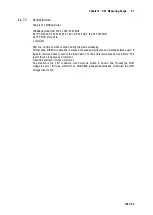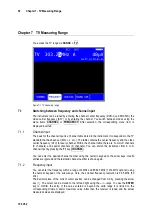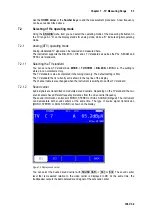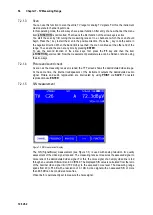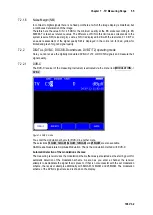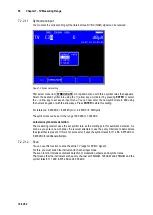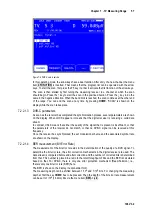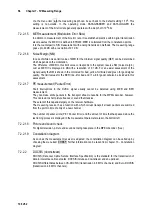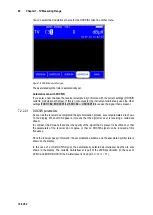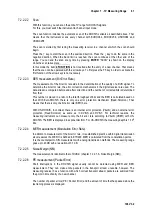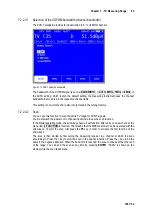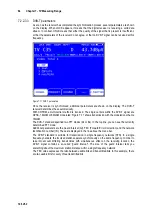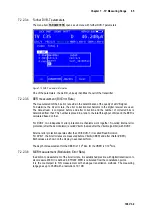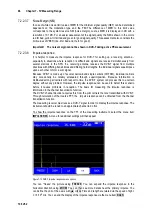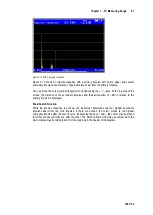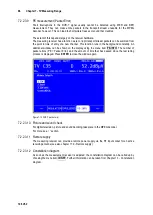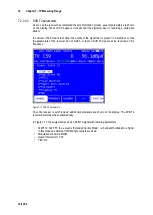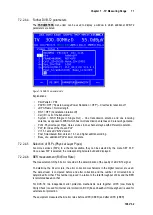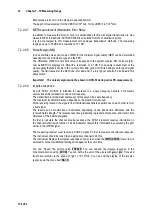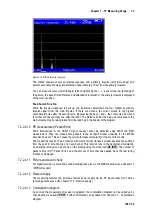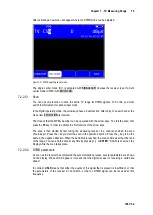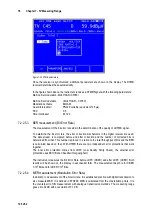
Chapter 7 - TV Measuring Range
61
106 V3.2
Scan
7.2.2.2.2
With this function, you can scan the entire TV range for DOCSIS signals.
For this, you must switch the instrument to channel input mode.
The scan function includes the automatic scan of the DOCSIS variants as described above. That
means that the instrument scans every channel with EUDOC64, EUDOC256, USDOC64 and
USDOC256.
The scan is started by first tuning the measuring receiver to a channel at which the scan should
begin.
Press the
↑
key to start the scan in the positive direction. Press the
↓
key to do the same in the
negative direction. When the band limit is reached, the scan continues at the other end of the
range. You can end the scan at any time by pressing
ENTER
. “SCAN” is shown on the display
while the scan takes place.
In this mode the item
2.FUNCTION
is not inverted after the entry of a new channel. That means
that the scan can be operated with the arrow keys. To first press the F5 key in order to activate the
first function of the arrow keys is not necessary.
BER measurement (Bit Error Rate)
7.2.2.2.3
The measurement of the bit error rate aids in the determination of the quality of a DVB signal. To
determine the bit error rate, the error correction mechanisms in the digital receiver are used. The
data stream is compared before and after correction and the number of corrected bits is determined
from that.
This number is placed in a ratio to the total throughput of bits and the BER is calculated based on
that. With Euro-DOCSIS, there is only one error protection mechanism (Reed-Solomon). That
means that there is only one bit error rate (BER) here.
With US-DOCSIS, in contrast, there is an internal error protection (Viterbi) and an external error
protection (Reed-Solomon) as same as in DVB-S and DVB-T. For technical reasons, the
measuring instrument can measure only the bit error rate according to Viterbi (VBER) with US-
DOCSIS. The BER is displayed in exponential form. For US-DOCSIS the measuring depth is 1•10
8
bits.
MER measurement (Modulation Error Rate)
7.2.2.2.4
In addition to measurement of the bit error rate, it is established practice within digital transmission
also measures the MER. It is defined in ETR290. MER is calculated from the constellation points.
It is the counterpart to S/N measurement with analog transmission methods. The measuring range
goes up to 40 dB with a resolution of 0.1 dB.
Noise Margin (NM)
7.2.2.2.5
The measurement is identical to that of DVB-C (chapter 7.2.2.1.6 - Noise Margin (NM)).
PE measurement (Packet Error)
7.2.2.2.6
Short interruptions in the DOCSIS signal usually cannot be detected using MER and BER
measurement. They can make entire packets in the transport stream unusable, however. The
measuring receiver has a function with which corrupt transport stream packets are summed from
the point in time of entry of a new channel.
The number of packet errors (PE = Packet Error) and the amount of time that has passed since the
last tuning process is displayed.

